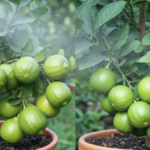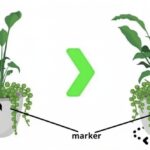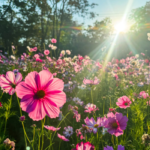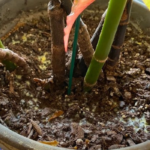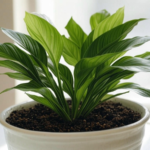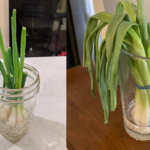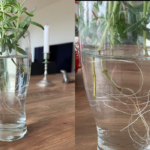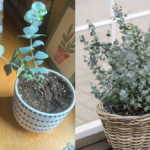Learn how to propagate pitcher plant at home with easy, step-by-step methods including division, stem cuttings, leaf pullings, and seeds. This complete guide shares practical tips for beginners and experienced gardeners, covering pitcher plant care after propagation, ideal soil, watering, sunlight, humidity, and temperature requirements. Whether growing Nepenthes or Sarracenia varieties, follow these simple techniques to successfully grow and multiply your pitcher plants in the right conditions.
I have been growing pitcher plants in my home garden for several years. From my experience, propagating pitcher plants takes patience, but once you know the right methods, it becomes a rewarding process. Whether you grow Nepenthes (tropical pitcher plants) or Sarracenia (temperate pitcher plants), you can multiply them through division, stem cuttings, leaf pullings, or seeds.
IN THIS ARTICLE
About Pitcher Plant and Its Types
Pitcher plants are carnivorous plants that trap insects using their specialized pitcher-shaped leaves. Different types of pitcher plants require slightly different propagation techniques.
| Plant Type | Examples | Best Propagation Methods |
|---|---|---|
| Nepenthes (Tropical) | Nepenthes alata, Nepenthes ventrata | Stem Cuttings, Seeds |
| Sarracenia (Temperate) | Sarracenia purpurea, Sarracenia flava | Division, Leaf Pullings, Seeds |
Why This Matters: Understanding your pitcher plant type helps in choosing the most successful propagation method.
Quick Care Tips for Pitcher Plant Propagation
- Use distilled or rainwater only.
- Maintain humidity between 60%–80%.
- Place in bright indirect sunlight.
- Use sphagnum moss or peat-perlite soil mix.
- Be patient — pitcher plants grow slowly.
How to Propagate Pitcher Plant — Detailed Methods
1. Propagation by Division
Best For: Sarracenia and mature Nepenthes plants.
Step-by-Step Process:
- Select a mature pitcher plant with multiple growth points.
- Gently remove the plant from its pot and loosen the soil or moss.
- Identify natural clumps or crowns that have roots and leaves.
- Use a sterilized sharp knife or garden shears to separate each clump.
- Ensure each section has a healthy root system and at least one growing point.
- Replant the divisions in separate pots filled with sphagnum moss or a peat-perlite mix.
- Water with distilled or rainwater and place in a warm, humid environment.
Important Tip:
Propagation by division is best done in early spring when plants begin active growth.
2. Propagation by Stem Cuttings
Best For: Nepenthes species (Tropical pitcher plants).
Step-by-Step Process:
- Choose a healthy stem with at least 2–3 leaves.
- Cut below a node using sterilized scissors or a sharp blade.
- Remove the lower leaves, keeping the top two leaves intact.
- Dip the cut end in rooting hormone powder (optional but recommended).
- Place the cutting in a pot filled with live sphagnum moss or peat-perlite mix.
- Cover the pot with a clear plastic bag or use a propagation dome to maintain high humidity.
- Keep the setup in bright indirect light.
- Mist lightly every few days to keep the soil moist but not soggy.
- Wait 6–12 weeks for roots to develop.
Why Stem Cuttings Are Ideal:
Stem cuttings allow you to clone healthy plants while preserving the exact characteristics of the parent plant.
3. Propagation by Leaf Pullings
Best For: Sarracenia pitcher plants.
Step-by-Step Process:
- Select a mature, healthy leaf near the base of the plant.
- Gently pull downward until part of the white rhizome tissue comes off with the leaf.
- Place the pulling on damp sphagnum moss or peat-sand mix.
- Cover with a clear plastic cover or humidity dome.
- Provide bright indirect light and mist lightly.
- Wait 1–3 months for new plantlets to develop from the pulling.
Note:
Leaf pulling propagation has lower success rates but is an affordable method for hobby growers.
4. Propagation by Seeds
Best For: Rare pitcher plant species and patient gardeners.
Step-by-Step Process:
- Collect fresh seeds after pollination and flowering.
- For Sarracenia seeds, cold stratify in the fridge for 4–6 weeks inside a moist sphagnum moss bag.
- For Nepenthes seeds, no stratification is required.
- Sow seeds on top of sphagnum moss or a peat mix without covering them.
- Mist lightly with distilled water.
- Cover with plastic wrap or a humidity dome.
- Place under grow lights or in bright indirect sunlight.
- Maintain temperature between 22–28°C for best germination.
- Wait 4–12 weeks for germination. Seedlings may take up to 3 years to mature fully.
Why Seed Propagation Is Important:
While slower, seed propagation helps maintain genetic diversity and is essential for conservation.
Ideal Growing Conditions for Pitcher Plant Propagation
| Growing Factor | Recommended Condition |
|---|---|
| Water | Distilled water or rainwater only |
| Soil | Sphagnum moss or peat-perlite mix |
| Light | Bright, indirect sunlight |
| Temperature | 20–30°C (Nepenthes) / 15–25°C (Sarracenia) |
| Humidity | 60%–80% |
Aftercare Tips for Newly Propagated Pitcher Plants
- Water only with rainwater or distilled water.
- Maintain consistent humidity using trays or covers.
- Place in bright but indirect light to avoid leaf burn.
- Avoid chemical fertilizers. Pitcher plants feed naturally on insects.
- Allow plants to grow undisturbed for several months before repotting.
Conclusion
Now you know exactly how to propagate pitcher plant using the four main methods: division, stem cuttings, leaf pullings, and seeds. From my own gardening experience, division and stem cuttings provide the fastest results, while seed propagation is a long but satisfying process.
By maintaining proper soil, water, light, and humidity conditions, you can grow healthy new pitcher plants in your home garden or greenhouse. Whether you are a beginner or an experienced gardener, these methods will help expand your pitcher plant collection.
How to Propagate Kalanchoe – Leaf, Stem, Water, Indoors & Seed Methods .
How to Propagate Hydrangeas – 3 Easy Methods (Water, Cutting, and Soil)

